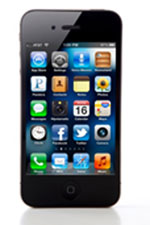Related Posts
A bad (but not rotten) Apple made good
Last weekend, I went to the Apple store Saturday night to pick up my Mac Air which had been sent to California a week earlier when the graphics card malfunctioned. I’d been without it for several days and really missed its lightness and convenience. The Mac was fixed, and I was a happy consumer. No questions were asked and I was not charged. Then, Sunday morning, I was ready to check emails on my iPhone, and nothing happened: black screen, no response. It seemed a cru el joke, when I’d been at the Apple store the previous night. I went to the Apple site and read about diagnostics. I tried what I could, but most of the steps are dependent on a working iPhone. Sunday night, I was back at the Apple store. After a while, I walked out with a new iPhone. While I would have preferred not making two visits to the store in two days, I was struck by how different this experience was from years past when I had computer problems. It’s the kind of retail experience one wants but rarely gets.
el joke, when I’d been at the Apple store the previous night. I went to the Apple site and read about diagnostics. I tried what I could, but most of the steps are dependent on a working iPhone. Sunday night, I was back at the Apple store. After a while, I walked out with a new iPhone. While I would have preferred not making two visits to the store in two days, I was struck by how different this experience was from years past when I had computer problems. It’s the kind of retail experience one wants but rarely gets.
Lesson one: buy the warranty. Lesson two: don’t live far from the Apple store. Lesson three: most information is replaceable. Lesson four: don’t panic (assuming devices are backed up).
Most information is replaceable
This experience reminded me how much has changed in my (our) relationship to information. While I did not lose any of the information on the Mac Air, I was warned that could happen. Some information on the iPhone which hadn’t been backed up was lost. (Thanks to our office systems, most information was backed up.) Even though it would have been time-consuming and annoying, I realized that little was irreplaceable. It took me back to the time, many years ago, when I was working on my doctoral dissertation. Because of Hopkins’ challenging format requirements, I took the drafts to a woman who typed it on her IBM Selectric typewriter. (Remember those?) Each time I made a change, it was back to Pat where I paid page charges. I was so worried about losing information that I kept one copy in our refrigerator and one in the car trunk. The articles I painstakingly copied in the library were protected as though they were gold.
Like many people, my relationship to information has changed dramatically. After years of lugging around stacks of journal articles on particular topics, I’ve been letting go. It’s all out there, and most of it is findable. What’s more, there’s more and better content also identifiable. Information is relatively plentiful. Does this make any piece of information less valuable? I do not know, but it would be consistent with conclusions of Nicholas Carr, author of The Shallows.
What are not easily replaceable are the processes and products of synthesis. A particular piece of information is merely that, maybe a building block. It’s the human act of synthesizing, of making something of the information that still is uniquely ours (although artificial intelligence tools can do a lot of it). And that’s why Carr is concerned about our “power browsing” of websites and spending only about ten seconds per page. He wrote (quoting Dr. Michael Merzenich in his blog post,“Going Googly”) that our brains are engaged less directly and more shallowly in the synthesis of information when we use research strategies that are all about efficiency, secondary (and out-of-context) referencing, and once over, lightly.
After reading his book, which was the summer reading book at UNC, I’ll be more conscious of my Web habits, at least for a while.

